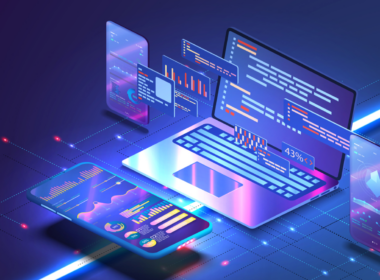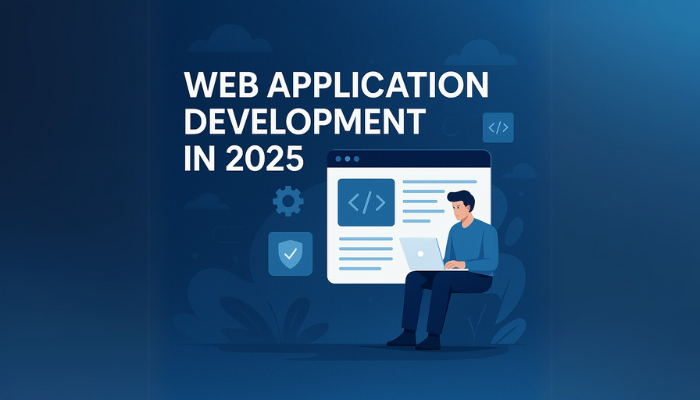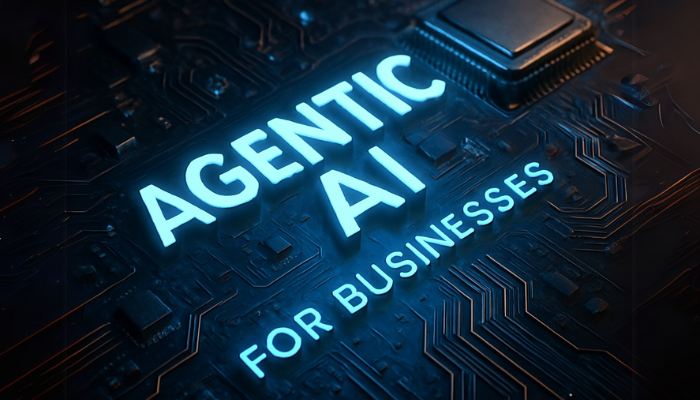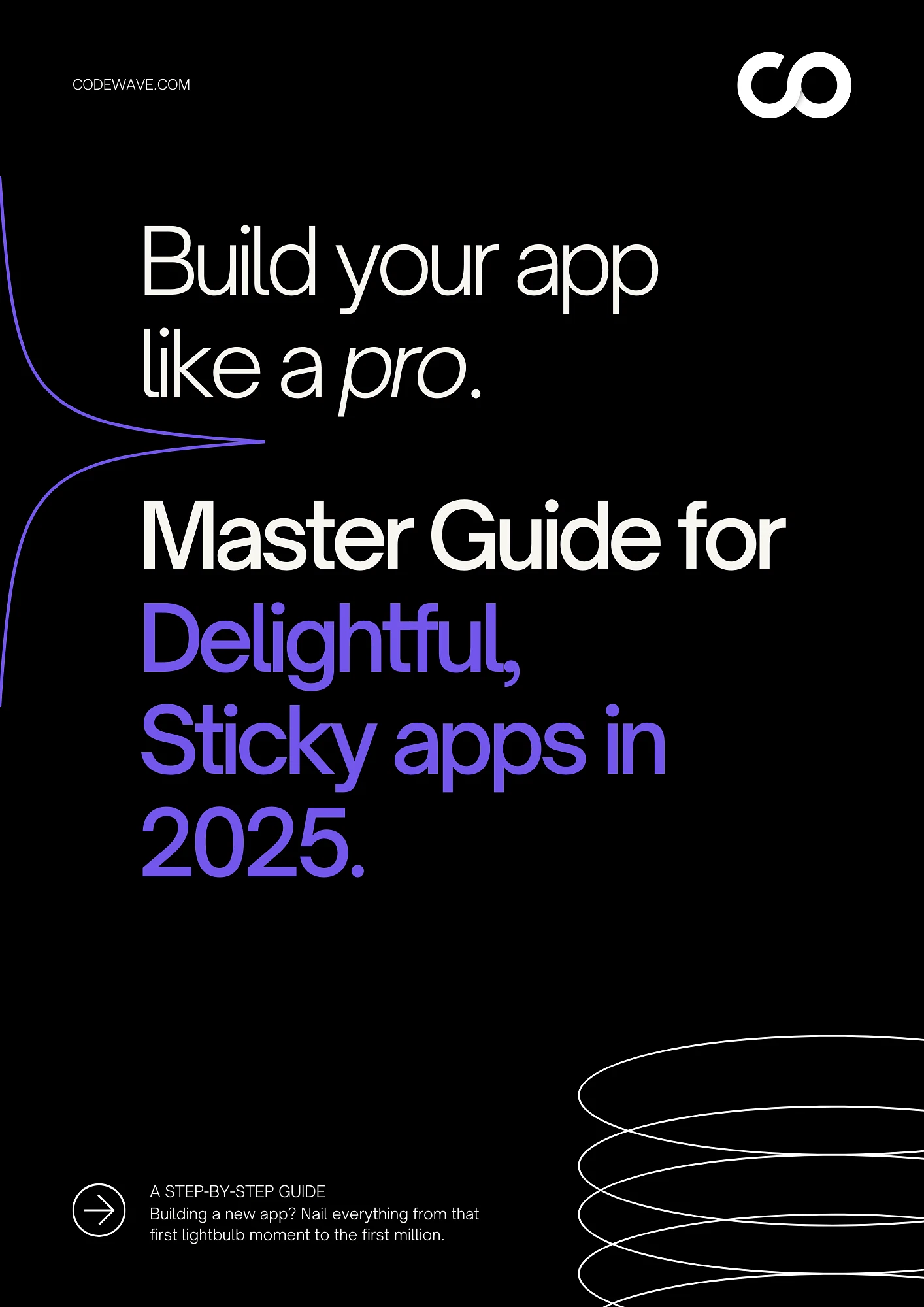Let’s say you’re a small business owner. Every day, you juggle hundreds of tasks, from customer service to data analysis. It can get overwhelming, right? Now, what if you could hand off some of that workload to a smart assistant that learns and improves over time? Sounds like a dream come true.
This is where AI agent frameworks come in. These frameworks provide the tools and structure needed to build AI agents that work effectively. They help the AI agents learn from their actions, adjust to new information, and get better over time. With the right framework, you can make sure your tasks are automated efficiently and with little manual effort.
Let’s explore the top AI agent frameworks leading the charge.
What Are AI Agents?
AI agents are smart systems that perform tasks on their own. They gather information, make decisions, and improve over time. These agents can handle everything from answering customer questions to managing business data.
Rather than following fixed instructions, AI agents learn from experience and get better as they process more information. They automate repetitive tasks and solve problems without needing constant supervision.
Now that we know what AI agents are, let’s take a look at how they’re changing the game in automation.
The Role of AI Agent Frameworks in Automation
As businesses face growing demands, finding efficient ways to handle workloads without compromising quality becomes crucial. AI agent frameworks are stepping in to fill this gap. Here’s how they meet the need for smarter automation:
- Constant Improvement: AI agents improve by learning from every task they complete. For example, a customer service bot gets better by analyzing past interactions. The AI agent framework is what enables this learning. It provides the structure and tools for the AI to process data, adapt, and improve over time, ensuring efficient and accurate performance.
- Instant Decisions, Real-Time Results: With AI frameworks, businesses can react to data in real time. For example, AI agents in logistics can adjust routes dynamically based on traffic conditions, ensuring timely deliveries without manual input.
- Taking Over Complex Tasks: AI agents can handle complex tasks that need detailed analysis. For example, in healthcare, AI can help diagnose diseases by analyzing medical images faster and more accurately than traditional methods. The AI agent framework helps by giving the AI the tools it needs to process and understand large amounts of data, making sure the results are accurate and reliable.
- Effortless Scalability: As businesses expand, AI frameworks allow automation to scale effortlessly without additional manpower. An online retailer, for instance, can automate everything from order processing to customer follow-ups, handling thousands of transactions at once. The framework ensures smooth integration and growth by adapting to increasing tasks without compromising efficiency.
- Accuracy Without Fatigue: Unlike humans, AI agents never get tired. They can handle repetitive tasks like data entry or report generation with constant accuracy, reducing errors and saving time. The AI agent framework maintains high precision by enabling continuous, error-free performance, ensuring that tasks are completed consistently and reliably.
Also Read: Understanding Agentic Process Automation: A Comprehensive Guide
Now that we’ve seen how AI agent frameworks transform automation, let’s check out the top 10 frameworks making it all happen. These are the tools helping businesses automate smarter and faster.
10 AI Agent Frameworks for Automation
| Framework | Type | Main Use | Industry Applications |
| AutoGen | AI Automation | Task automation, decision-making support | E-commerce, Customer Service, Business Operations |
| CrewAI | AI for Teams | Collaboration, team-based workflows | Corporate Environments, Tech Startups |
| LangChain | NLP & Language | Building language models, conversational AI | Chatbots, Customer Service, Content Generation |
| LangGraph | Graph AI | Data analysis through graphs | Social Media Analytics, Healthcare, Research |
| OpenAI Swarm | Swarm Intelligence | Collective decision-making, distributed AI | Robotics, Autonomous Vehicles, AI Research |
| OpenAI’s GPT | NLP & Language | Customer service, content generation | E-commerce, Media, Customer Support |
| TensorFlow Agents | Reinforcement Learning | Complex decision-making, optimization | Robotics, Logistics, Gaming |
| IBM Watson | Cognitive Computing | Data analysis, predictive analytics | Healthcare, Finance, Customer Insights |
| Microsoft D365 | Enterprise AI | Supply chain management, ERP | Retail, Manufacturing, Financial Services |
| Google Cloud AI | Cloud AI | Data processing, analytics | Healthcare, Retail, Marketing |
| Keras | Deep Learning | Neural networks, predictive models | Healthcare, Automotive, Robotics |
| H2O.ai | Machine Learning | Predictive modeling, automation workflows | Financial Services, Marketing, Retail |
| Dialogflow | NLP & Chatbots | Chatbot development, customer service | Retail, Banking, Telecom |
| Rasa | Open Source NLP | Conversational AI, chatbots | Customer Service, E-commerce, SaaS |
| DeepMind | Reinforcement Learning & AI Research | Complex decision-making, game playing | Healthcare, Robotics, Artificial Intelligence |
1. AutoGen
AutoGen is an AI framework designed to automate repetitive tasks and support decision-making processes. It’s designed for businesses that want to streamline operations and increase productivity without overburdening their teams.
Key Features:
- Task Automation: AutoGen allows businesses to automate repetitive tasks such as data entry, report generation, and customer support interactions. By automating these tasks, businesses can save time, reduce errors, and allow employees to focus on more strategic work.
- Real-Time Decision Making: AutoGen supports real-time decision-making based on immediate data inputs, enabling businesses to respond to situations quickly. This capability is especially beneficial in fast-paced environments like customer service or e-commerce.
- Seamless Integration: The framework integrates with existing business tools and software, ensuring that AI automation doesn’t disrupt current workflows. Businesses can implement AutoGen without needing to overhaul their existing systems.
- Scalability: Whether you are a small startup or a large enterprise, AutoGen can scale with your business. As your workload increases, the framework adapts, handling more tasks and ensuring that your AI capabilities grow along with your business needs.
- Data-Driven Insights: AutoGen provides actionable insights by analyzing data from automated tasks. These insights help businesses improve operations, identify areas for optimization, and enhance overall performance.
| Pros | Cons |
| Automates repetitive tasks | May require initial setup and training |
| Reduces human error | Can be complex for non-technical teams |
| Integrates easily with existing systems | Limited flexibility in highly customized tasks |
| Scalable for growing businesses | Potential dependency on vendor updates |
| Provides real-time actionable insights | Needs continuous monitoring and updates |
2. CrewAI
CrewAI is an AI framework that enhances team collaboration and workflow automation. It focuses on improving communication, task management, and decision-making across organizations.
Key Features:
- Team Collaboration: CrewAI promotes team collaboration by providing real-time data and insights that help teams make informed decisions. It helps break down communication barriers and encourages transparent workflows, making collaboration smoother.
- Task Prioritization: CrewAI automatically prioritizes tasks based on urgency and relevance, ensuring teams focus on the most important activities. This feature helps optimize workflows, reduce bottlenecks, and ensure deadlines are met consistently.
- AI-Driven Insights: By leveraging data from interactions and workflows, CrewAI offers predictive analytics that guide decision-making. These insights can highlight potential risks, suggest process improvements, and even identify opportunities for growth.
- Customizable Workflows: CrewAI is fully customizable to meet the specific needs of different organizations. Businesses can tailor the framework’s workflows to align with their operational requirements, ensuring the AI solution fits their unique objectives.
- Scalable Solutions: Whether your team is small or large, CrewAI scales to meet your needs. As your business grows, CrewAI adapts, providing the necessary resources to manage a larger workforce and more complex workflows.
| Pros | Cons |
| Improves team collaboration | Can be challenging to set up initially |
| Automates workflow tasks | Might require customization for specific use cases |
| Provides valuable AI-driven insights | Some teams may struggle with adoption |
| Integrates with popular tools | Might be overkill for small teams |
| Scalable for large teams | May require ongoing maintenance and updates |
3. LangChain
LangChain is a natural language processing (NLP) framework designed for creating powerful conversational AI systems, such as chatbots and virtual assistants. It’s perfect for businesses looking to enhance user experience through advanced text-based interactions.
Key Features:
- Natural Language Processing: LangChain excels at processing and understanding complex language, enabling businesses to create more intelligent and human-like chatbots. It allows for deeper interaction, helping businesses provide better, more intuitive customer experiences.
- Customizable Models: LangChain supports a wide range of pre-built models and customization options, making it easy for developers to fine-tune the system to fit specific business needs. Whether you’re building a customer support bot or a virtual assistant, LangChain’s flexibility allows for extensive customization.
- Multilingual Capabilities: LangChain enables businesses to create chatbots that can communicate with users in multiple languages. This makes it an ideal tool for businesses looking to expand their reach globally and provide support to diverse audiences.
- Easy Integration with Existing Systems: LangChain integrates easily with other systems like CRM and help desk software, allowing businesses to build conversational AI solutions that work alongside existing infrastructure without disruption.
- Scalable for Growing Needs: As businesses grow, so does their need for more robust AI solutions. LangChain scales efficiently, handling increased user interactions, complex queries, and diverse business needs as your company expands.
| Pros | Cons |
| Flexible and highly customizable | Requires a solid understanding of NLP |
| Supports multiple languages | Can be complex for beginners |
| Open-source for full transparency | May require additional resources for deployment |
| Ideal for building advanced chatbots | Limited support for non-text-based inputs |
| Integrates with external systems | Performance may vary depending on model selection |
4. LangGraph
LangGraph is an AI framework that focuses on graph-based data analysis, enabling businesses to understand and analyze complex relationships within their data. It’s ideal for applications in social media analytics, financial modeling, and recommendation systems.
Key Features:
- Graph-Based Data Analysis: LangGraph uses graph theory to analyze the relationships and patterns in data. This approach allows businesses to uncover hidden insights, such as customer preferences or product associations, that traditional data analysis methods may miss.
- Real-Time Data Processing: LangGraph can process live data streams, allowing businesses to get immediate insights from dynamic data sources. This is particularly useful for industries like social media analytics and financial services, where real-time decision-making is essential.
- Data Visualization: The framework provides powerful data visualization tools that make it easy to understand complex relationships within datasets. By visualizing data as graphs, businesses can gain a clearer understanding of trends and patterns.
- Scalable Solutions: LangGraph can handle large datasets efficiently, making it scalable for businesses of all sizes. Whether you’re dealing with millions of data points or a smaller dataset, LangGraph ensures fast and reliable data processing.
- Integration with Analytics Tools: LangGraph integrates seamlessly with popular analytics platforms like Google Analytics, Tableau, and other business intelligence tools, helping businesses turn complex data into actionable insights quickly.
| Pros | Cons |
| Effective for analyzing complex relationships | May be overkill for simple tasks |
| Excellent for real-time data | Requires knowledge of graph algorithms |
| Provides advanced visualization tools | Steep learning curve for beginners |
| Scalable for large datasets | Limited pre-built integrations |
| Ideal for dynamic data environments | Performance can be impacted by data complexity |
5. OpenAI Swarm

OpenAI Swarm is a collaborative AI framework that uses multiple AI agents working together to solve problems. It’s ideal for tasks requiring distributed decision-making, such as robotics, autonomous systems, and large-scale simulations.
Key Features:
- Swarm Intelligence: OpenAI Swarm uses the concept of swarm intelligence, where multiple agents work together to solve complex problems. This approach allows for highly efficient decision-making and problem-solving in dynamic environments.
- Distributed Decision-Making: In scenarios where real-time, distributed decisions are needed, OpenAI Swarm allows multiple agents to collaborate, making collective decisions faster and more accurately than a single agent could.
- Autonomous Operation: Agents within the swarm can operate independently and make decisions based on real-time data, enabling autonomous systems in environments such as robotics, autonomous vehicles, and large-scale simulations.
- Scalability: OpenAI Swarm scales easily, whether you’re working with a small number of agents or managing a large-scale swarm for a massive task. This makes it ideal for industries requiring distributed problem-solving.
- Robustness and Reliability: Even with multiple agents working together, the system remains robust and reliable. OpenAI Swarm is designed to handle unpredictable environments and failures, ensuring continuous operation.
| Pros | Cons |
| Efficient for large, distributed tasks | Complexity increases with the number of agents |
| Excellent for collaborative problem-solving | High computational resources required |
| Scalable and adaptable | Can be difficult to manage multiple agents |
| Robust decision-making in dynamic environments | Potential coordination issues between agents |
| Reduces failure rates with redundancy | Needs expert knowledge to implement |
6. OpenAI’s GPT

OpenAI’s GPT is a language model known for its powerful natural language processing capabilities. It’s widely used to automate customer service, generate content, and even assist in data-driven decision-making.
Key Features:
- Natural Language Understanding: GPT excels in processing and generating human-like text, allowing it to handle a wide range of tasks, from customer support and content generation to complex conversational AI. It adapts seamlessly to the language and tone of each interaction, ensuring it feels personal and natural.
- Scalability for High-Volume Needs: Whether you’re managing thousands of customer interactions or creating vast amounts of content, GPT handles high-volume tasks without compromising quality. Its scalable nature makes it ideal for businesses of all sizes, ensuring consistency and efficiency at every level.
- Industry Versatility: GPT’s flexibility makes it a valuable asset across industries like e-commerce, media, customer support, and more. It can be customized to suit various business needs, from automating responses to enhancing content creation, making it a go-to solution for diverse applications.
- Real-Time Personalization: GPT’s ability to analyze and respond based on individual user input allows it to provide personalized, contextually relevant interactions. By learning from past conversations, it tailors each response to meet specific customer needs, improving engagement and satisfaction.
- Multilingual Support for Global Reach: With its ability to understand and generate text in multiple languages, GPT opens up opportunities for businesses to engage with global audiences. Whether you’re interacting with customers across different regions or markets, GPT ensures clear communication without language barriers.
| Pros | Cons |
| Excellent for text generation | May require fine-tuning for specific industries |
| Can handle large-scale tasks | Needs substantial computing resources |
| Easy to integrate with existing platforms | Can produce biased or inaccurate content without proper oversight |
7. TensorFlow Agents
TensorFlow Agents is a framework for reinforcement learning. It’s used for training agents to make decisions in dynamic environments, perfect for applications in robotics, logistics, and gaming.
Key Features:
- Reinforcement Learning: TensorFlow Agents excels in reinforcement learning, enabling agents to make decisions by interacting with their environment and learning from feedback. This makes it perfect for applications that require dynamic decision-making, such as robotics, gaming, and logistics.
- Adaptability: Unlike traditional models, TensorFlow Agents continuously improve as they gather more data. This adaptability makes it ideal for tasks that evolve over time, like optimizing supply chains or teaching a robot to navigate changing environments.
- Seamless Integration with TensorFlow: TensorFlow Agents is built on the powerful TensorFlow ecosystem, allowing for easy integration with other machine learning models. This ensures smooth data flow and compatibility, whether you’re building complex AI systems or enhancing existing ones.
- Scalability: TensorFlow Agents can handle large-scale environments, making it suitable for both small and enterprise-level applications. Its ability to scale ensures it works efficiently, whether you’re running simulations or training agents on real-world data.
- Customizable for Various Use Cases: TensorFlow Agents is highly flexible and can be customized for specific tasks, whether it’s for autonomous vehicles, personalized gaming experiences, or warehouse automation. This makes it a versatile choice for a wide range of industries.
| Pros | Cons |
| Excellent for decision-making tasks | Requires significant computational power |
| Ideal for dynamic, real-time environments | High complexity for new users or small projects |
| Scalable and flexible for different industries | Takes time to train and optimize models |
8. IBM Watson
IBM Watson is a cognitive computing platform that helps businesses with data analysis and predictive analytics. It’s widely used in healthcare, finance, and customer insights to automate workflows and make data-driven decisions.
Key Features:
- Cognitive Computing: IBM Watson leverages machine learning, deep learning, and natural language processing (NLP) to understand complex data, uncover patterns, and make intelligent decisions. This cognitive capability enables businesses to analyze both structured and unstructured data, providing deeper insights into customer behavior, market trends, and more.
- Predictive Analytics: With its advanced analytics capabilities, IBM Watson helps businesses predict future trends based on historical data. Whether it’s forecasting customer demands, market shifts, or potential risks, Watson’s predictive models enable businesses to make informed, data-driven decisions, reducing uncertainty.
- Industry-Specific Solutions: Watson offers customized solutions for industries like healthcare, finance, and customer insights, helping organizations tackle sector-specific challenges. From automating patient care workflows in healthcare to identifying financial risks in finance, IBM Watson’s solutions are tailored to meet the unique needs of each industry.
- Data-Driven Decision Making: IBM Watson provides businesses with the tools to make smarter decisions by analyzing large volumes of data quickly and accurately. Its data-driven approach helps organizations automate workflows, identify operational inefficiencies, and optimize strategies for better results.
- Scalable and Flexible: IBM Watson’s solutions are designed to scale with your business. Whether you’re a small company or a large enterprise, Watson can grow with your needs, providing flexibility to adapt to evolving business requirements and expanding data sources.
| Pros | Cons |
| Powerful analytics and insights | It can be complex to set up and configure |
| Highly customizable for different industries | Expensive for small businesses |
| Proven track record in enterprise solutions | Requires ongoing data training and maintenance |
Also Read: Top Open Source Chatbot Frameworks to Use
9. Microsoft D365
Microsoft D365 is an enterprise AI platform that integrates seamlessly with business systems, like supply chain management and ERP. It’s used in retail, manufacturing, and financial services to automate tasks and streamline operations.
Key Features
- Enterprise Integration: Microsoft D365 integrates seamlessly with existing Microsoft products like Office 365, Azure, and Power BI, ensuring a smooth transition for businesses already using Microsoft tools. This integration simplifies workflows and eliminates the need for complex setups, making it a natural choice for businesses in the Microsoft ecosystem.
- Comprehensive AI Solutions: D365 offers a suite of AI-powered tools designed to enhance customer relationship management (CRM), enterprise resource planning (ERP), and more. With built-in AI capabilities, businesses can automate routine tasks, gain valuable insights from data, and optimize operations—whether it’s in sales, supply chain, or customer service.
- Scalability: Microsoft D365 is designed to scale, making it suitable for small businesses to large enterprises. As your business grows, D365 adapts to your needs, handling increasing data volumes and supporting more users while maintaining high performance.
- Real-Time Data and Insights: With D365, businesses gain access to real-time data and insights, enabling smarter decision-making. The platform uses AI to analyze data across various departments (sales, finance, HR, etc.), giving decision-makers a clear view of their operations and opportunities for improvement.
- Simplify Operations: By automating key processes, Microsoft D365 helps businesses streamline operations, reduce manual errors, and improve efficiency. Whether it’s automating inventory management, order processing, or financial reporting, D365 helps teams focus on more strategic initiatives.
| Pros | Cons |
| Seamlessly integrates with Microsoft tools | High cost for full implementation |
| Comprehensive suite of enterprise tools | May require specialized training to use effectively |
| Strong scalability for large businesses | May not be ideal for small-scale applications |
10. Google Cloud AI
Google Cloud AI offers powerful data processing and analytics capabilities, making it a go-to option for businesses in healthcare, retail, and marketing. It allows businesses to harness the power of AI without requiring deep technical knowledge.
Key Features:
- Data Processing & Analytics: Google Cloud AI offers powerful tools to process and analyze large datasets quickly. With advanced analytics capabilities, businesses can extract actionable insights from their data, helping them make informed decisions across various sectors like healthcare, retail, and marketing.
- Cloud Integration: Leveraging Google’s robust cloud infrastructure, Cloud AI provides scalable, flexible AI applications that grow with your business. This cloud integration ensures high availability and seamless access to data and AI models, wherever your team is located.
- Easy-to-Use Tools: Google Cloud AI is designed with simplicity in mind, offering user-friendly tools that require minimal technical expertise. Whether you’re building machine learning models or deploying AI applications, Google provides intuitive interfaces and pre-trained models to simplify the process for businesses at any technical level.
- Cost-Effective AI Solutions: Google Cloud AI offers scalable pricing, allowing businesses to access powerful AI tools without breaking the bank. Whether you’re a startup or an enterprise, you only pay for what you use, making it an affordable solution for businesses of all sizes.
- Pre-built AI Models: It provides a variety of pre-built, ready-to-deploy AI models for common tasks like image recognition, speech-to-text, and natural language processing. These models allow businesses to integrate AI quickly and easily without the need for deep technical knowledge.
| Pros | Cons |
| Great for data-heavy applications | It can be costly depending on the scale of usage |
| Easy integration with Google Cloud | May require cloud knowledge for optimal setup |
| Wide range of AI tools available | Limited flexibility compared to more specialized frameworks |
11. Keras
Keras is a popular deep learning framework known for its simplicity and ease of use. It’s perfect for building neural networks and predictive models, commonly used in healthcare, automotive, and robotics industries.
Key Features:
- User-Friendly Interface: Known for its simple and intuitive API, Keras makes deep learning accessible to both beginners and experienced developers. It streamlines the process of building neural networks, enabling quick experimentation without the complexity.
- Seamless Integration with TensorFlow: With easy integration into TensorFlow, Keras taps into the full power of machine learning, including GPU acceleration and distributed training. This combination makes it an ideal choice for building high-performance models.
- Customizable for Diverse Applications: Whether it’s image classification, predictive modeling, or robotics, Keras offers the flexibility to design tailored neural networks. It allows you to experiment and fine-tune models for specific tasks, ensuring your solution fits unique challenges.
- Rapid Prototyping: The framework excels at quick prototyping, letting you test ideas fast. This is especially beneficial in fast-paced industries like healthcare or automotive, where innovation and iteration are key to developing effective solutions.
- Pre-Built Layers and Models: With a library of pre-built layers and models, Keras speeds up development, allowing you to focus on what matters most—tuning and optimizing the model. Its extensive set of tools simplifies the creation of sophisticated deep learning solutions.
| Pros | Cons |
| Simple and user-friendly API | Limited to deep learning tasks |
| Fast prototyping of deep learning models | It may not be as powerful as other frameworks for large-scale applications |
| Wide support community | Requires knowledge of neural networks |
12. H2O.ai
H2O.ai is a machine learning framework that specializes in predictive modeling and workflow automation. It’s widely used in financial services, marketing, and retail to analyze data and build machine learning models.
Key Features:
- Predictive Modeling: H2O.ai excels at building predictive models that analyze trends and make accurate forecasts. Whether it’s predicting customer behavior or market shifts, the platform helps businesses leverage data for smarter decision-making and planning.
- Automation of Machine Learning Workflows: With H2O.ai, machine learning workflows are automated, simplifying the process of implementing AI across organizations. This reduces manual effort and accelerates the deployment of machine learning models, making AI more accessible and efficient.
- Wide Range of Algorithms: The platform supports a diverse set of machine learning algorithms, from generalized linear models to random forests and deep learning. This flexibility allows businesses to choose the best-fit model for their data, enabling more accurate and customized results.
- Scalability and Flexibility: Designed for both small teams and large enterprises, H2O.ai scales effortlessly to handle vast amounts of data. Its ability to process data efficiently ensures that businesses can use AI regardless of their size or data complexity.
- Open Source and Enterprise Solutions: H2O.ai offers both open-source tools and enterprise-grade solutions, giving businesses the flexibility to choose the option that best suits their needs. Whether you’re experimenting with models or deploying them on a large scale, H2O.ai provides the right tools for every stage.
| Pros | Cons |
| Fast model training and prediction | May not be as easy to use for beginners |
| Strong performance on large datasets | Can be expensive for smaller projects |
| Wide algorithm support | Needs significant computing power for larger tasks |
Also Read: Top Python AI and Machine Learning Libraries
13. Dialogflow
Dialogflow is a powerful framework for building chatbots and conversational agents, with strong capabilities in natural language understanding. It’s widely used in retail, banking, and telecom industries for improving customer service experiences.
Key Features:
- Natural Language Understanding: Dialogflow excels at understanding complex conversations and recognizing customer intent. Its advanced Natural Language Processing (NLP) capabilities make interactions more intuitive, allowing chatbots to handle a variety of customer queries with ease.
- Easy Integration: Designed for seamless integration, Dialogflow works effortlessly with popular messaging platforms like Slack, Facebook Messenger, and more. This makes it simple for businesses to deploy chatbots across multiple channels, enhancing customer interactions wherever they occur.
- Multi-Language Support: Whether your customers speak English, Spanish, or Mandarin, Dialogflow enables businesses to create multilingual chatbots. This global reach ensures you can provide customer service in multiple languages, making it an ideal solution for businesses with international clients.
- Customizable Conversational Flows: With Dialogflow, you can design personalized conversational flows that align with your business goals. The platform allows you to fine-tune how chatbots respond, ensuring they meet specific needs—whether it’s handling basic FAQs or providing advanced support.
- Integration with Google Cloud: Using the power of Google Cloud, Dialogflow benefits from robust scalability and security features. Whether you’re deploying a chatbot for a small business or a large enterprise, it ensures fast, reliable performance and seamless operation across all devices.
| Pros | Cons |
| Easy to integrate with existing platforms | May require customization for complex tasks |
| Supports multiple languages | Limited functionality without paid plans |
| Great for customer service automation | Not suitable for tasks outside conversational AI |
14. Rasa
Rasa is an open-source NLP framework for building conversational AI systems, such as chatbots. It’s especially popular for businesses that need to create customized chatbots for customer service or internal automation.
Key Features:
- Open-Source Flexibility: Rasa is an open-source platform, giving businesses complete control over customization. It’s free to use, making it a go-to choice for developers who want to build fully tailored AI solutions without limitations, ensuring flexibility in creating personalized experiences.
- Advanced NLP Capabilities: Rasa’s Natural Language Processing (NLP) abilities allow it to understand and process user input, enabling more natural and human-like conversations. Whether handling simple requests or more complex dialogue, Rasa helps create intelligent, responsive systems.
- Customizable Workflow: One of Rasa’s standout features is its ability to customize workflows. Businesses can define how chatbots interact, ensuring the chatbot aligns with specific needs—whether for customer service or internal automation. This level of control ensures that the AI works exactly how your team requires.
- Multi-Channel Support: Rasa integrates with various messaging platforms, including Slack, Facebook Messenger, and WhatsApp, allowing businesses to deploy consistent customer service across multiple channels without hassle.
- Scalable and Extensible: Whether you’re building a simple FAQ bot or a complex AI assistant, Rasa scales to meet your needs. Its extensibility allows it to evolve as your business grows, ensuring that the system can handle increased traffic and new functionality without compromise.
| Pros | Cons |
| Fully customizable and open-source | Requires coding expertise |
| Great for complex, custom chatbot workflows | It can be difficult for non-technical teams to manage |
| Strong community support | Not as user-friendly as some alternatives |
15. DeepMind
DeepMind is an advanced AI research company that develops cutting-edge AI agents, particularly in reinforcement learning. While it’s primarily known for its research contributions, its technologies are also being applied in industries like healthcare and robotics.
Key Features:
- Reinforcement Learning: DeepMind specializes in reinforcement learning, a type of machine learning where AI agents learn through trial and error. This approach is particularly effective for real-time decision-making and environments that require quick adaptation, such as robotics or autonomous systems.
- Healthcare Applications: DeepMind’s AI technologies are changing healthcare by improving disease diagnosis, analyzing complex medical data, and enhancing treatment plans. Its AI is used in cutting-edge applications, such as predicting patient deterioration and identifying early signs of diseases like cancer.
- Advanced AI Research: As a leader in AI research, DeepMind consistently pushes the boundaries of what AI can do. Its groundbreaking work in reinforcement learning and other AI techniques has led to major advancements, including the development of AlphaGo and applications in drug discovery and climate modeling.
- Cross-Industry Applications: Beyond healthcare and robotics, DeepMind’s technologies are expanding into industries like energy and sustainability, where they help optimize systems, reduce waste, and create more efficient processes, making AI more impactful across various sectors.
- Collaboration with Leading Institutions: DeepMind collaborates with leading healthcare institutions, research organizations, and universities to develop and deploy its technologies, ensuring they are applied to real-world problems in meaningful ways.
| Pros | Cons |
| Pioneering advancements in AI research | Primarily focused on research rather than commercial products |
| High potential for complex, dynamic tasks | Requires deep technical expertise |
| Groundbreaking applications in healthcare | Limited availability for practical use |
Loved this guide but overwhelmed by choices? Book a free 15-minute consult—we’ll help you pick the right tools.
Sometimes, one AI agent can’t handle everything on its own. Let’s take a look at why multi-agent AI frameworks are becoming essential and how they can help tackle bigger challenges for your business.
Why Use Multi-Agent AI Frameworks?
Multi-agent AI frameworks refer to systems where multiple AI agents work together to solve complex problems. Each agent in the framework performs specific tasks or makes decisions based on its individual capabilities, and together, they collaborate to address larger, more dynamic challenges.
Here’s why businesses are turning to these frameworks:
- Collaboration for Better Problem Solving: Just like a team working together, multiple AI agents can collaborate to tackle different aspects of a problem. This allows them to combine their strengths, providing a more comprehensive solution to challenges.
- Increased Efficiency and Speed: With several agents working in parallel, tasks can be completed faster. This is especially useful in industries where time is critical, such as logistics or healthcare, where AI agents can simultaneously handle multiple processes.
- Handling Complex, Dynamic Environments: Multi-agent frameworks excel in environments where the situation is constantly changing. For instance, in robotics or autonomous vehicles, agents can adjust to new inputs, work together, and respond more flexibly to unforeseen circumstances.
- Scalability: As your business grows, multi-agent frameworks can scale to handle more data, more tasks, and more agents. This scalability ensures that your AI solutions grow with your needs, without losing efficiency or performance.
- Redundancy and Reliability: With multiple agents, if one agent fails, others can pick up the slack, ensuring the system remains operational. This redundancy enhances reliability, making sure business operations continue smoothly even when challenges arise.
Well, knowing the top frameworks and multi-agent AI frameworks isn’t enough—let’s break down how to choose the one that’s just right for your business!
How to Choose the Right AI Agent Framework for Your Business?
Selecting the right AI agent framework isn’t just about picking the first tool that looks good—it’s about choosing the one that fits your business like a glove.
So, let’s skip the usual “compare this” or “choose based on features” advice and look at a more creative, yet practical, approach to finding your perfect AI match.
1. Visualize Your AI Partner
Think of AI as your digital business partner. Now, consider what qualities this partner should have. What tasks do you need them to handle, and what strengths will make them the right fit for your business?
Do you want one that follows orders and completes basic tasks, or do you need one who can think on its feet, adapt, and handle more sophisticated processes?
- Simple and Direct Tasks? You might want an AI that works like an assistant, automating straightforward tasks. Frameworks like Microsoft AutoGen or Dialogflow are perfect here—they get the job done fast with minimal complexity.
- Creative and Adaptive Tasks? Need an AI partner that evolves, adapts, and solves complex challenges? Think about LangChain or TensorFlow Agents, where the AI learns over time and optimizes for tougher tasks.
2. What’s Your Scale of Operations?
Are you running a small startup or managing a large enterprise? The scale of your business will heavily influence which AI framework is the right fit.
- Growing Fast but Need Simplicity? If you’re scaling quickly but still need ease of use, something like Google Cloud AI might suit you. It offers powerful capabilities with a user-friendly interface.
- Aiming for Major Expansion? Large enterprises with complex operations benefit from frameworks like IBM Watson or Microsoft D365, which provide the depth, power, and scalability required to automate at a grand scale.
3. Imagine Your Budget as a Puzzle
Your budget isn’t just a number—it’s the key to unlocking certain frameworks. Some AI frameworks are more budget-friendly and give you a lot of flexibility. Others are premium solutions offering full-service automation, but they come with a higher price tag.
- Tight Budget? Go for something open-source or cost-effective. Rasa or TensorFlow Agents are powerful yet affordable solutions that are highly customizable for businesses that can handle more technical complexity.
- Flexible Budget? If you’re willing to invest in enterprise solutions, IBM Watson or Microsoft D365 provide comprehensive tools, integrations, and premium support that justify the investment for businesses aiming for long-term growth.
4. Think About Integration as Building a Bridge
Choosing the right framework is also about how well it fits into your current systems. How well will it mesh with your existing tools, platforms, and business processes?
- Already Using Microsoft or Google Tools? Go for frameworks that seamlessly integrate with these ecosystems. Microsoft D365 or Google Cloud AI are ideal choices if you’re heavily invested in these platforms.
- Need Custom Integration? For businesses with unique systems and tools, Rasa and LangChain offer greater flexibility to tailor the AI to your specific needs, but they require more effort to integrate.
5. Define Your AI’s “Personality”
Is your AI agent meant to be a workhorse who gets tasks done with minimal interaction, or do you want it to interact with users in a more personalized and dynamic way?
- For Functional, Efficient Automation? Frameworks like Microsoft AutoGen or Keras are designed to perform specific tasks efficiently and accurately without complex engagement.
- For a More Interactive, Engaging Experience? If you need AI that can converse naturally and understand complex user input, Dialogflow, LangChain, and Rasa are perfect for creating human-like interactions.
6. Imagine the Support as a Safety Net
Think of the support and community around a framework as your safety net. If you’re diving into the deep end, you’ll want a strong support system to ensure smooth sailing.
- Need a Strong Support System? Frameworks like TensorFlow Agents and Dialogflow have large, active communities, and robust support systems, perfect if you want a solid backup to help with troubleshooting and scaling.
- Comfortable Going Solo? Open-source options like Rasa or LangChain give you complete control but come with the responsibility of managing any roadblocks yourself.
Choosing the right AI agent framework is like picking a partner for your business. Some are great for straightforward, quick tasks, while others excel in complex, evolving environments. The key is to evaluate what fits best with your needs today and your vision for tomorrow.
With so many frameworks and features to consider, it can be hard to know where to begin. But here’s the good news—at Codewave, we’ve got the expertise to make this journey easy and rewarding.
Let’s Build Your AI Future with Codewave
Codewave has already powered over 400 successful projects across industries, helping businesses automate tasks, boost productivity, and unlock real value. Here’s why we’re the right fit for your AI journey:
1. Full-Cycle AI Agent Development
We don’t just build agents, we create smart, adaptive systems that learn, grow, and drive results. From chatbots and personalized AI assistants to autonomous systems and predictive agents, our agents use technologies like Machine Learning, NLP, and Reinforcement Learning to help your business run smarter.
2. Custom AI Development for Unique Needs
No one knows your business like you do, which is why we take a custom approach. We build AI agents tailored specifically to your needs, whether that’s improving customer interactions, streamlining workflows, or automating complex decision-making. With tools like TensorFlow, PyTorch, and Scikit-learn, we craft AI solutions that continuously improve and evolve to meet your demands.
3. Seamless Integration with Your Systems
Adopting a new AI solution shouldn’t mean tearing down your existing systems. At Codewave, we integrate your AI seamlessly with your current tech stack—whether it’s your CRM, ERP, or any other platform. With REST APIs and GraphQL, we connect your AI agent to everything you’re already using, automating workflows and boosting productivity across the board.
4. Scalable Solutions for Growing Businesses
Your AI system should grow with your business. We build scalable AI solutions that handle increasing data, users, and tasks effortlessly. Using technologies like Kubernetes for container orchestration and AWS for cloud scalability, we ensure that your AI solution expands smoothly as your needs evolve.
5. Ongoing Monitoring and Continuous Improvement
AI isn’t a one-time deployment, it’s an ongoing process. Codewave monitors your AI’s performance in real-time with Prometheus and Grafana, while using MLflow to manage updates and improve your models. We ensure that your AI system stays ahead of the curve, adapting and improving continuously to meet your changing business needs.
Ready to automate with AI agents? We design, deploy, and scale frameworks like LangChain/AutoGPT for businesses. Get a free audit
Codewave is a UX first design thinking & digital transformation services company, designing & engineering innovative mobile apps, cloud, & edge solutions.







